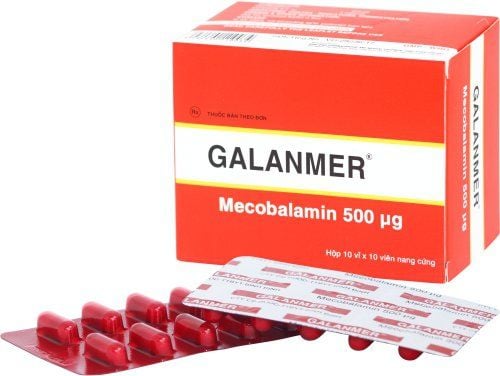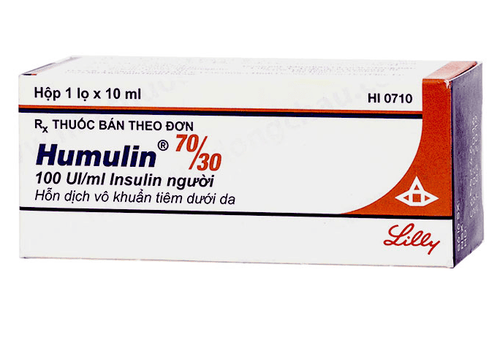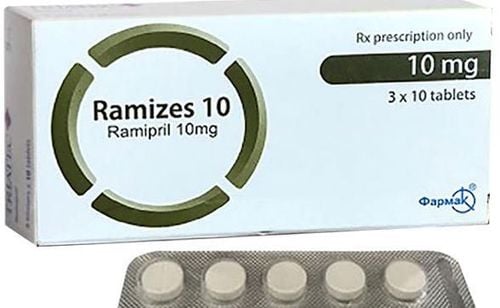This is an automatically translated article.
Diabetes is a common disease today with the risk of many dangerous complications. One of them is polyneuropathy. The doctors have assigned the patient suffering from this complication to use Alfa Lipogamma 600 Oral.
1. What is Alfa Lipogamma 600 Oral?
Alfa Lipogamma is prepared in tablet form with the active ingredient Thioctic Acid (also known as Alpha-Lipoic Acid) content 600mg. In addition, the drug ingredient Alfa Lipogamma includes a number of excipients such as Methylhydroxypropylcellulose, colloidal Silicon dioxide, microcrystalline cellulose, lactose monohydrate, sodium carboxymethyl cellulose, talc silica, magnesium stearate, Macrogol 6000, sodium dodecyl sulphate.2. Uses of Alfa Lipogamma 600 Oral
Alfa Lipogamma product is indicated for the treatment of people with abnormal sensations due to diabetic polyneuropathy. The thioctic acid in Alfa Lipogamma is similar in nature to an endogenous vitamin, and has the same function as a coenzyme in the redox reaction of the carboxyl group of alpha-keto acid.
Elevated blood sugar in diabetes leads to the accumulation of glucose in the matrix proteins in the blood vessels, thereby forming substances known as the end products of glycation. This process results in impaired intranerveal blood flow, causing tissue hypoxia or ischemia, especially when combined with increased production of free oxygen radicals. This condition occurs in the peripheral nerve concurrently with the depletion of antioxidants (such as glutathione).
In studies on rats, the active ingredient thioctic acid in Alfa Lipogamma 600 oral drug occurred to interact with the biochemical reactions induced by diabetic rats. Experimentally induced streptozotocin with reduced formation of glycation end products, increased intraneuronal blood flow, and stimulation of increased antioxidant capacity of glutathione and other antioxidants to free radicals produced in diabetic neuropathy. The results obtained in this trial suggest that thiotic acid can help improve peripheral nerve function by reducing the manifestations of sensory disturbances such as sensations of heat, pain, numbness or tingling.
On the pharmacokinetics of Alfa Lipogamma:
Thioctic acid is rapidly absorbed after oral administration. Due to the significant first-pass metabolism, absolute bioavailability (oral versus intravenous) is only approximately 20%; Due to its rapid distribution into body tissues, the half-life of Alfa Lipogamma in humans is only about 25 minutes; The relative bioavailability of thioctic acid with the solid dosage form is 60% higher than that of the oral solution; Maximum plasma concentrations of approximately 4 μg/ml were measured approximately 30 minutes after taking 1 tablet of Alfa Lipogamma 600 oral ; By applying radiolabeling in animal tests, it has been shown that thioctic acid is mainly excreted by the kidneys, in which metabolites account for the majority (about 80-90%) and very little unchanged. The metabolism of thioctic acid occurs mainly by p-oxidation and/or S-methylation of thiol isotopes.
3. Dosage of Alfa Lipogamma
In cases of confirmed diagnosis of sensory disturbances associated with diabetic polyneuropathy in adults, the recommended daily dose is 1 tablet of Alfa Lipogamma 600 oral (corresponding to 600mg Thioctic Acid). Drink 1 time at 30 minutes before breakfast.
If the sensory disturbance is more severe, the patient may be prescribed infusion therapy with thioctic acid from the beginning.
How to use and duration of treatment of Alfa Lipogamma:
Alfa Lipogamma 600 Oral when used, need to drink whole tablet with sufficient amount of water on an empty stomach; Concomitant use of the drug with food may reduce absorption. Therefore, the most appropriate time to take Alfa Lipogamma is 30 minutes before breakfast, especially in people with prolonged gastric emptying time; Diabetic polyneuritis is a chronic disease, so patients may need long-term treatment with Alfa Lipogamma; It should be noted that Alfa Lipogamma is only effective in supporting the improvement of sensory disorders, while the basic foundation of the treatment of diabetic polyneuropathy is still the most optimal blood sugar control possible. Alfa Lipogamma overdose and treatment:
Common manifestations of Thioctic Acid overdose are nausea, vomiting and headache; Whether intentional or unintentional, the use of large amounts of Alfa Lipogamma (10-40g thioctic acid) with alcohol has been reported to cause severe toxicity, even death. The first clinical sign of thioctic acid toxicity is psychomotor disturbances or disturbances of consciousness and typically generalized seizures and lactic acidosis. Besides, there are a number of other manifestations such as hypoglycemia, shock, rhabdomyolysis, hemolysis, disseminated wall thrombosis (DIC), marrow failure and multi-organ failure...; Overdose management: In case of suspected serious toxicity due to Alfa Lipogamma 600 oral drug (such as dose over 10 tablets 600mg in adults and over 50mg/kg body weight in children) should immediately take the patient to a medical facility. The medical staff are capable of basic first aid, including measures to induce vomiting, gastric lavage, use of activated charcoal, etc. At the same time, it is necessary to support and manage unusual symptoms such as generalized seizures, lactic acidosis and other life-threatening problems.
4. Contraindications of Alfa Lipogamma
Alfa Lipogamma 600 Oral is absolutely contraindicated in people with a history of hypersensitivity to thioctic acid or any of the excipients of the drug.Because use studies in children and adolescents have not been conducted, it is best not to use Alfa Lipogamma in these subjects.
5. Some notes when using Alfa Lipogamma 600 Oral
People with the human leukocyte antigen genotype (common in Japanese, Korean, or Caucasian ethnicity) have an increased risk of developing autoimmune insulin syndrome, a disorder of the hormones that regulate blood glucose with an expression Patients with a history of hereditary fructose intolerance, glucose-galactose malabsorption or saccharase-isomaltase enzyme deficiency should not use the drug. Alfa Lipogamma 600 Oral. Habitual drinking habit is a high risk factor for neuropathy, which can reduce the effectiveness of Alfa Lipogamma. Therefore, it is recommended that patients with diabetic polyneuropathy do not consume alcohol, including the duration of Alfa Lipogamma treatment and the drug-free interval. Because Alfa Lipogamma has some side effects such as hypoglycemia, dizziness, sweating, headache, visual changes, it should be used with caution when prescribing to people who are driving and operating machinery. The general rule of thumb in drug therapy in pregnant and lactating women is to use it only after careful consideration of the risks and benefits, which is included with this product. Therefore, the subject group is only treated with Alfa Lipogamma when prescribed by a doctor, even if studies show that thioctic acid does not affect reproduction, fetal development or breast-feeding children.
6. Some side effects of Alfa Lipogamma
Digestive disorders such as nausea, vomiting, gastrointestinal pain and diarrhea... however this side effect of the drug is very rare; Hypersensitivity reactions are very rare, if at all mild, rash, urticaria with pruritus; Changes and/or disturbances in taste; Hypoglycemia: When the process of sugar consumption of diabetic patients improves, leading to a high risk of hypoglycemia. Manifestations suggestive of hypoglycemia include dizziness, sweating, headache, visual changes; Disruption of the hormone that regulates blood glucose has a marked effect, this is called autoimmune insulin syndrome;
7. Alfa Lipogamma Drug Interactions
The active ingredient cisplatin when used concurrently with Alfa Lipogamma 600 oral can lead to a decrease in appetite.
Thioctic acid in Alfa Lipogamma can form complexes with metal ions, so do not use concomitantly with drugs with metal compounds (such as iron, magnesium, milk containing calcium). If Alfa Lipogamma 600 Oral is used daily, 30 minutes before breakfast, iron and magnesium products can be used at noon or afternoon. Hypoglycaemic effects may occur in combination with insulin or other antidiabetic agents. Therefore, it is necessary to monitor blood glucose closely, especially in the early stages of treatment with thioctic acid.
Cases of diabetic neurodermatitis require a decrease in the dose of insulin or an increase in the dose of antidiabetic agents.
Please dial HOTLINE for more information or register for an appointment HERE. Download MyVinmec app to make appointments faster and to manage your bookings easily.













